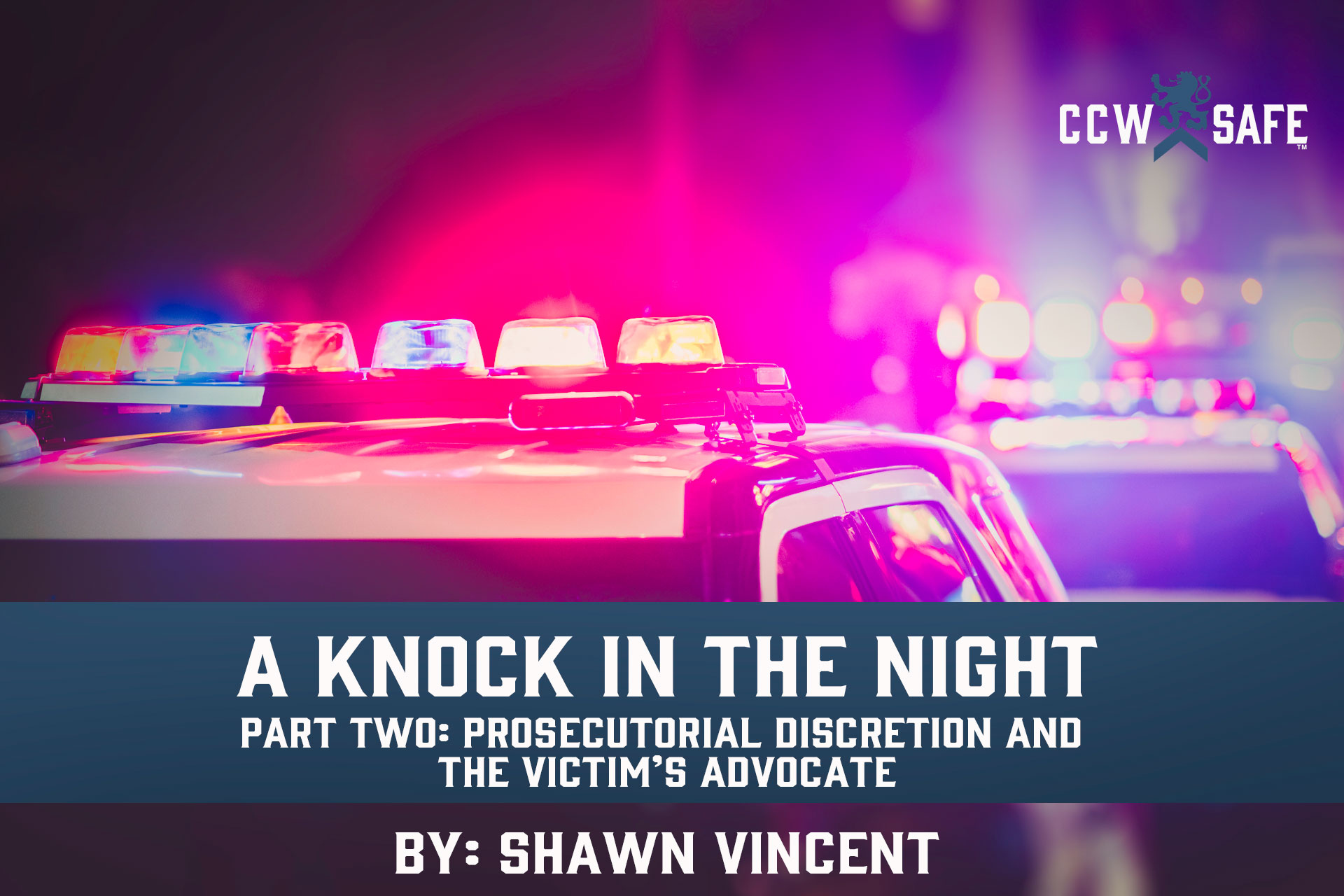
Posted on March 20, 2020
A Knock in the Night Part Two: Prosecutorial Discretion and the Victim’s Advocate
A Knock in the Night
Part Two: Prosecutorial Discretion and the Victim’s Advocate
The US Navy was expecting Chief Petty Officer John E. Hasselbrink to report for duty aboard the nuclear attack submarine USS Illinois on April, 15, 2018. Instead, the Navy got word that the sailor, who had been stationed at Pearl Harbor for his entire 22-year-career, had been shot and killed by a veteran Army soldier named Greggory Farr.
While the police investigated the homicide, the Navy conducted their own inquiry. If Hasselbrink had contributed to the circumstances that lead to his death, his next of kin wouldn’t be eligible for a $100,000 “death gratuity” and a “survivor benefit plan.”
Both the police and the Navy would determine that on the eve of his scheduled deployment, Hasselbrink went out drinking. His blood alcohol level reached 0.25 — three times the legal limit for driving. That’s why the sailor Urbered home, but the Uber driver dropped Hasselbrink a few doors down from his apartment, one in a row of practically indistinguishable townhomes. Hasselbrink went to the wrong door.
Reportedly, the sailor was in the habit of keeping his door unlocked so friends could crash at his apartment. He was, therefore, surprised to find the front door locked.
According to court documents, Greggory Farr was sleeping on his living room sofa when he “heard someone trying to open the front door and pressing their shoulder into the door, making a ‘thud’ sound.” Farr, recovering from an ankle surgery, grabbed his AR-15-style rifle, which he owned illegally. He asked the stranger to identify himself and displayed his rifle so it could be seen through a window in the door. When Hasselbrink continued “shouldering the door and messing with the handle,” Farr fired a single shot. It struck the sailor in the neck, killing him.
According to Task & Purpose, the Navy investigation concluded that Hasselbrink’s death was “not the result of willful neglect and not due to his own misconduct.” The Navy further concluded, “A reasonable person cannot assume that engaging the doorknob on the door of an incorrect apartment would lead to death from a gun fired on the other side of the door.”
Likewise, the prosecuting attorney determined that firing at an unknown individual through a locked door was not reasonable and charged Farr with manslaughter.
In castle doctrine cases, the home defender is often given significant latitude by the authorities. There’s no place where a defender is more justified in using deadly force than in his home. Criminal defense attorney and CCW Safe National Trial Counsel Don West calls this concept “forgivable subjectivity.” It’s the idea that investigators and prosecutors who have discretion in charging a shooting are likely to allow a home defender a few minor errors in judgment.
However, some mistakes are hard to forgive, and sometimes there are other forces that can bend a prosecutor’s discretion against the defender.
We mentioned that Farr possessed his rifle illegally. Don West says that, technically, the legality of a weapon shouldn’t play a role in determining whether or not a person used the weapon in lawful self-defense. The defender will likely face seperate weapons charges, which is true in the Farr case, but in theory, it shouldn’t affect his self-defense claim. Of course it doesn’t look good, and for a prosecutor who could go either way on charging a defender or not, this bad fact doesn’t help the defender at all.
Moreover, the fact that Hasselbrink was a career Navy man doesn’t bolster Farr’s “forgivable subjectivity.” Don West says that who the decedent was in life, who his family is, and his community connections can influence a prosecutor’s decision to file charges. Prosecutors are, in part, advocates for the victims of crime.
In the Ted Wafer case, which has a number of parallels with the Hasselbrink shooting, the defender shot 19-year-old Renisha McBride who had been violently banging on his front door, trying to get in. It turns out she was drunk, high, and injured — disoriented and looking for help. The shooting occured in the wake of the high-profile Trayvon Martin and Jordan Davis shootings. McBride’s family protested for weeks while reporters looked on, and that public pressure no doubt had some impact on the prosecutor’s ultimate decision to charge Wafer with second degree murder.
Likewise, it’s hard for a prosecutor in Hawaii to ignore the US Navy’s interest in investigating the killing of one of their own — especially when they conclude that their sailor didn’t act recklessly or unreasonably. It would take a singular act of courage for an elected prosecutor to exercise his discretion against the will of the Navy when there are other negative factors leaning against the accused.
The lesson for concealed carriers and gun owners concerned with home defense is that, in most self-defense scenarios, you don’t know who is on the business end of your firearm. If it is someone important, or well-connected, or just well-loved by a passionate advocate, you could face a surprising challenge to the “forgivable subjectivity” you might otherwise benefit from as a home defender. If you truly find yourself in an imminent life or death situation, it won’t matter who your attacker is, you’ll do what you need to do to protect yourself and your family. But that is why we stress avoidance. If you can make decisions to avoid a life or death situation before the do-or-die moment, then you won’t risk facing public calls for your arrest like Ted Wafer, or the crushing influence of the US Navy like Greggory Farr.
 |
SHAWN VINCENT- LITIGATION CONSULTANTShawn Vincent is a litigation consultant who helps select juries in self-defense cases, and he manages public interest of high-profile legal matters. If you have any questions for Shawn, or would like more articles like this, let us know belo |